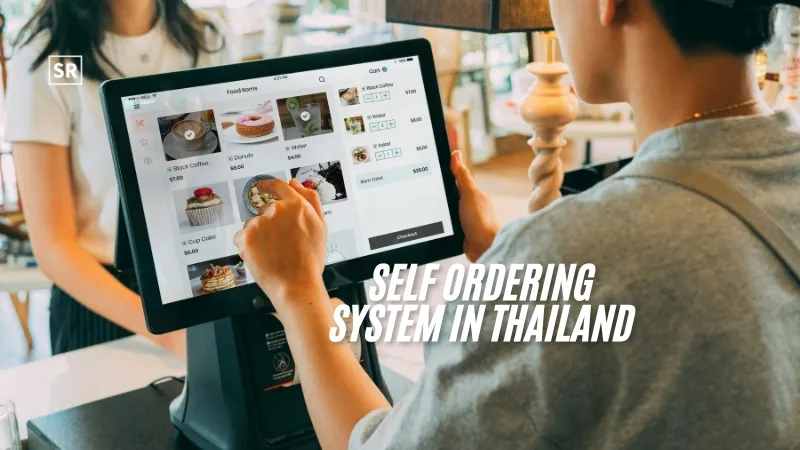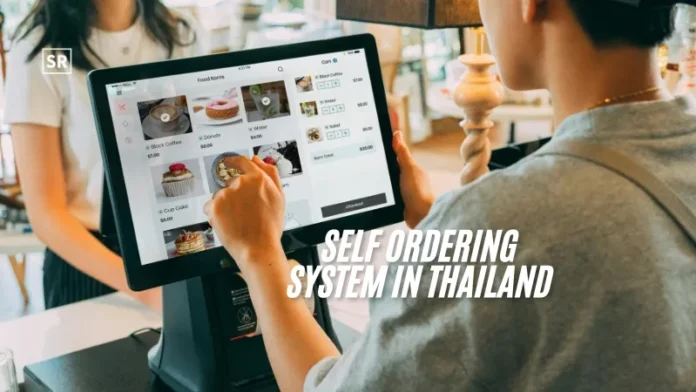
In the last ten years, technology has changed the way businesses work all around the world — and the food industry is no exception. In Thailand, one of the biggest changes in restaurants is the use of the Self-Ordering System (known in Thai as “ระบบสั่งออเดอร์สินค้าด้วยตนเองในประเทศไทย”). This system allows customers to order food quickly and easily without waiting for staff, changing the way people interact with restaurants.
The Self-Ordering System is fast, simple, and efficient. It not only improves the customer experience but also helps restaurants work more smoothly. With digital screens or mobile apps, customers can browse menus, customize their meals, and pay directly — all in just a few taps.
As we move toward 2025, Thailand’s food industry is transforming through technology. The Thai Self-Ordering System has become a key driver of this change, taking the dining experience to a whole new level. It brings more convenience for customers and helps restaurant owners run their businesses more effectively.
The hospitality and retail industry in Thailand is changing quickly. As technology continues to influence how people shop and dine, businesses are turning to new digital tools to keep up with customer expectations. One of the biggest innovations making a difference is the Self-Ordering System in Thailand. You can now find these systems in restaurants, cafés, cinemas, retail stores, and even convenience shops — completely changing how customers place orders and interact with businesses.
In this blog, we’ll talk about what a self-ordering system is, why it’s becoming so popular in Thailand, which industries are using it, the benefits it offers to both businesses and customers, the challenges involved, and what the future of this technology looks like.
What is Self Ordering System
A Self-Ordering System is a digital tool that lets customers place their own orders without asking staff for help. You usually see it in restaurants, cafés, or fast-food places. Customers can use touchscreens, tablets, or mobile apps to check the menu, pick what they want, customize food, and pay directly.
This system makes ordering faster and easier. People can take their time looking at menu options, see pictures of food, and use discounts or offers before paying. It also helps avoid long queues, especially during busy times.
For business owners, self-ordering systems save money on staff and reduce mistakes. They can suggest extra items or combos to increase sales. Many systems connect with kitchen screens and inventory software, so everything runs smoothly. Overall, it makes the dining experience faster, smarter and more convenient for everyone.
The Future of Self-Ordering System in Thailand
In the future, Thailand’s Self-Ordering System will work with more advanced technologies to make dining even easier and more connected. For example, augmented reality (AR) could let customers see their food in 3D before ordering, and artificial intelligence (AI) could suggest dishes based on what they ordered before.
The system may also link more with delivery services. Restaurants could let customers place both dine-in and delivery orders through the same system, making operations faster and reducing waiting times.
As cities become smarter, Self-Ordering Systems could expand beyond restaurants. They could be used in public places, malls, and transport hubs, creating a fully technology-based food system for everyone.
Self-Ordering Made Easy for Customers in Thailand
In Thailand, Self-Ordering Systems are changing the way people dine. Customers can place their own orders using touchscreens, tablets or mobile apps, making the process faster and more convenient.
People can take their time looking at the menu, see pictures of the dishes, customize their orders, and even use discounts or offers before paying. This helps reduce long waiting lines and lets customers order at their own pace.
Many customers enjoy the modern and smooth experience of using technology. Self-Ordering Systems make dining more personalized and efficient, giving customers control over their choices and a stress-free experience at restaurants, cafés, or fast-food outlets.
Affordable Self-Ordering for Small Restaurants in Thailand
Small restaurants in Thailand can now use low-cost Self-Ordering tools to make work easier and improve the customer experience. These tools include simple touchscreens, tablets, or mobile apps that let customers place orders on their own.
Even on a small budget, restaurant owners can use these systems to take orders, customize dishes, and process payments quickly and accurately. This helps reduce long queues, save money on staff, and avoid mistakes in orders.
Customers enjoy faster service clear menu displays, and the ability to choose or customize their food easily. These affordable Self-Ordering tools help small restaurants compete with bigger chains by offering modern and efficient service without spending too much.
Self Ordering System in Thailand
A self-ordering system in Thailand is a modern setup that lets customers place their food or product orders on their own, without needing to talk to staff. It uses digital screens and mobile tools to make ordering quicker and easier.
These systems are now common in many places such as fast-food restaurants, cafés, shopping malls, and even some street-food style outlets. Customers often see touchscreen kiosks, tablets on tables, or QR codes they can scan with their phones.
Using the system is simple — customers browse the menu, customize their order, add extra items, and make the payment directly on the device. This reduces errors and speeds up the entire ordering process, especially during busy times.
Businesses in Thailand like these systems because they help reduce queues, lower labor costs, and improve efficiency. Customers also enjoy the smooth experience since it feels interactive and convenient — just tap, order, pay and collect the food when it’s ready.
Conclusion
Self-Ordering Systems are changing the way people dine in Thailand, making it faster, easier, and more convenient for both customers and restaurant owners. Customers can look at menus, customize their orders, and pay at their own pace. At the same time, restaurants can work more smoothly, make fewer mistakes, and save money on staff. These systems are not only for big restaurants — even small restaurants can use affordable Self-Ordering tools to improve service and compete with larger chains.
In the future, Self-Ordering Systems will keep improving and connect more with services like delivery and digital payments. They could also be used in places outside restaurants, like malls, transport stations and other public areas creating a simple and modern food experience for everyone. Overall, these systems are helping Thailand’s food industry become smarter, faster, and more customer-friendly.
FAQs
Where can I find Self-Ordering Systems in Thailand?
You can find them in restaurants, cafés, fast-food outlets, cinemas, retail stores, convenience shops, and other public spaces.
How do Self-Ordering Systems help customers?
They make ordering faster and easier, reduce waiting lines, allow customization of food, and let customers use offers or discounts before paying.
Can small restaurants use Self-Ordering Systems?
Yes! There are low-cost Self-Ordering tools that small restaurants can use to improve service, speed up ordering, and compete with bigger chains.





